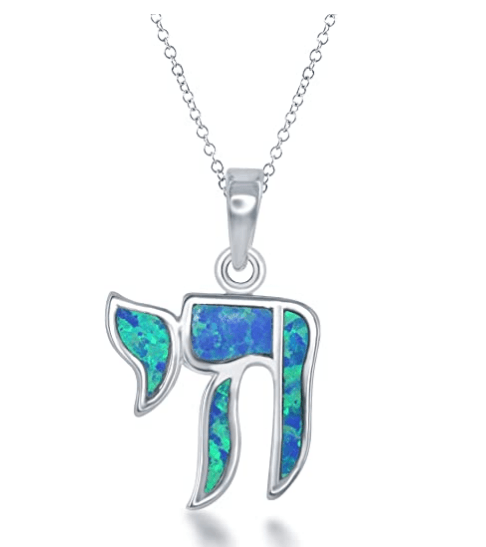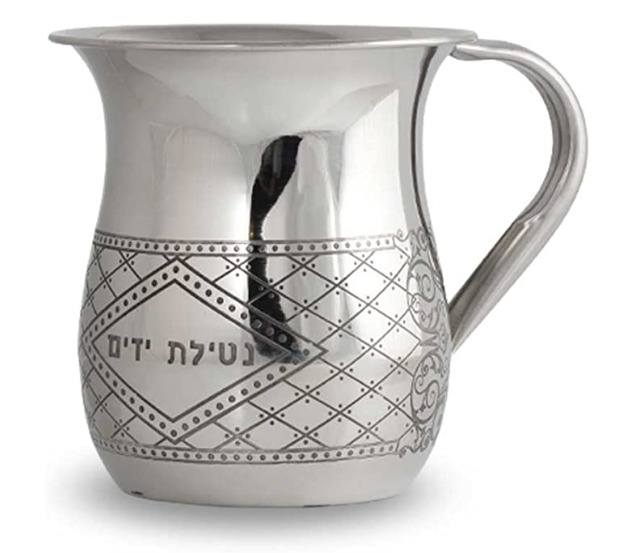As in all religious traditions, the Bar/Bat Mitzvah is a very important part of a Jewish male’s/female’s life. While thinking of Bar Mitzvah vs. Bat Mitzvah, we must note that these words regard an age, not an event. Someone achieves it by becoming 13.
All Jewish people are required to study the Torah during their lifetime, and a Bar/Bat Mitzvah is sort of a promise made between the child and their community that they will continue to study the Torah, even throughout their adult life.
It is known as a coming of age life event, and it happens when a child reaches 13 years of age (or 12 years of age for a girl). It is believed that it is the age in which a child becomes more responsible, and thereby more accountable for their choices and actions.
Bar Mitzvah vs. Bat Mitzvah: History
The Bible itself does not specify that any Bar Mitzvahs must happen at age 13. The Mishnah says that age 13 is when a vow will become valid, and the Talmud states it as a consequence that a boy becomes a man (as one can read in Numbers 6:2).
It is thought by many that the idea of a Bar Mitzvah originated in the Middle Ages, with more recent sources making notations as well. However, it is considered to be a fairly new event, with most Bar/Bat Mitzvahs happening only within the last one hundred years.
Not only the Talmud mentions Bar Mitzvah, but the Mishnah (Ethics of the Fathers, 5:21), too. It is believed that at five years old, they must learn about the Scripture, at ten years old, they must read the Mishnah, and at thirteen years old, study the commandments.
Bar Mitzvah means “Son of the Commandment.” Bat Mitzvah, therefore, means “Daughter of the Commandment.” It is believed that at the age of 13, each child is officially an adult, and therefore able to observe all Jewish commandments.
As children, they are not really required to observe the commandments yet. They are now also able to participate in all religious services, prayer, worship ceremonies, and also in contracts and court, as well as marriage.
They are able to take part in a minyan, which is a group of ten adult Jewish males who are called upon to lead the congregation in prayer. It is a requirement that minyans must be performed daily. One of the reasons a minyan is necessary is that some religious practices and prayers can’t be performed without it. It is a fine way of bringing the Jewish community together.
One glaring difference between the ceremony for boys and the one for girls is that in the Chasidic and Orthodox lines of Judaism, girls are not currently allowed to take part in any minyan. Instead, she will go on to be educated about how to keep her home environment a domesticated home life.
This naturally includes how to be a good mother and wife, and to take care of basic needs like cooking and cleaning. In many lines of Judaism, however, the girls are permitted to do exactly as the boys.
A vital requirement also is that they follow all 613 laws of the Torah and keep the halakha, which is the collection of Jewish laws that come from the written and oral Torah. Halakha developed from biblical commandments (mitzvot), and Talmudic and rabbinic law.
These are laws that accompany people in their every day, and they serve as a guidepost in living a moral and ethical life.
Some Clarifications

Clearly, any child, even at 13, can’t marry, have their careers and live their life completely by their own terms yet. What the ceremony is trying to say is that 13 is when a male child is old enough to understand the consequences of actions, and also understand how the community and world works, and therefore, is allowed a chance to live for the good of his community and world.
Basically, they are now an acknowledged element of the Jewish community. Making the right decisions in life is also stressed upon during this time. A ceremony is not actually necessary in order for the male to have rights and obligations, but most people do go along with it. It is a modern tradition, and it is not spoken of in the Talmud.
The Bar/Bat Mitzvah Day
A Bar/Bat Mitzvah occurs once a child has reached age 13. Thirteen is the age at which a child is considered an adult in the Jewish community. Traditionally, only Jewish males had this ceremony; however, in recent times, girls have been permitted to participate as well.
The words Bar/Bat Mitzvah means “one who is subject to the law.” It is the child’s first aliyah (ascension), into becoming a fully participating member of the worship events and prayers.
Even though any Jewish person is expected to study the Torah throughout life, sometimes a rabbi may have the Bar/Bat Mitzvah celebrant sign an agreement, stating that they will always be true to the commandments, and never waiver from their religion.
Education, therefore, is looked upon very highly in the Jewish tradition. The first thing the celebrant does in a Bar/Bat Mitzvah celebration is going to the Torah and read the blessing over the weekly reading. In recent years, it has become more common for the child also to chant during the complete haftarah portion.
Nowadays, it has even become common for the celebrant to read the whole Torah portion of prayers, or lead a good part of the service, or the most important prayer rituals. If they did not learn yet to read, they would at least recite the Benediction.
Many times, they will also lead the congregation in what’s known as a d’var Torah (discussion about a topic of the Torah). It is a custom for them to recite a speech, which popularly begins with the words, “Today, I have become a man.”
The child’s father also has participation, in which he makes a blessing and gives thanks to God for removing his child’s burden of responsibility for the child’s sins in childhood.
The significance if this is that until a child reaches Bar/Bat Mitzvah age, their parents are responsible for all of their actions and choices; more specifically, his sins. Also, several weeks before the child is to experience a Bar/Bat Mitzvah, they are permitted to lay tefillin.
Tefillin are small black boxes, and inside they have scrolls of parchment which contain verses from the Torah. Tefillin is worn by all observant Jewish people during weekday morning prayers.
It reminds all participants to be a “sign” and “remembrance of the Exodus, in which all were freed from Egypt. Most people wear it on their upper arm, and the straps are wrapped around their hands and fingers.
Adult Life Afterwards
As the years go on, the child will have more participation in all religious ceremonies. Even though it is most commonly performed on a Saturday, in many Orthodox communities, it happens during a weekday service.
All families have the option of choosing to delay the event, for reasons such as the Shabbat not being available for their ceremony, or maybe wanting more family and friends to attend by travel.
However, once a child is 13, all responsibilities and roles that come with it are still in effect, because again, Bar/Bat Mitzvah is an age, not an event.
A party after the services is not necessary; however, many people feel that it is like any other celebration, and there should be some type of event held with family, friends, and other loved ones, in which all could share in the boy’s new adult life.
That would be known as a seudat mitzvah. Their rabbi or teacher also blesses them, many times with an address. Sometimes, many families even bring their child on a certain trip or arrange a special event in their honor.
There is a reference in several sources which states that it’s a mitzvah for someone to make a meal on the day of his son’s Bar Mitzvah, as well on the day of his son’s wedding.
It is common for the child to recite something simple, like a small reflection on what the day means to them. In some instances, they may also be given a certificate as well.

As with any type of party, the child is also given gifts by the attendees. Although it is not required, many people choose to give a religious gift, and if the gift has to do with charity, also choose to give in multiples of 18, because this number is the Hebrew word for life (chai).
Elaborate parties are not the goal, so it depends upon what and how the child’s family decides to celebrate.
The preparation for a Bar/Bat Mitzvah is as complete as any preparation for a religious ceremony. Schooling is, of course, a large part of the preparation.
The child is required to attend Shabbat prayer services held at the temple, go to Hebrew school, and also participate in charity or goodwill projects in their community.
Another important role that may occur once they have had a Bar Mitzvah, is that they are able to be a tutor for other children in Torah cantillation, the study of Hebrew, and simple Jewish notions and ideas.
Detractors
As much as Bar Mitzvahs are loved and celebrated, there have been detractors as well. For example, the Reform Movement tried to eliminate the Bar Mitzvah events at a time, claiming that a 13-year old child should not be considered an adult at all.
It was replaced with a confirmation event when the child is age 16 or 18. Some Conservative synagogues use the confirmation practice as well. Clearly, there was concern with people dropping out of Bar/Bat Mitzvahs, so as recently as 2012 saw the Union for Reform Judaism to begin the B’nai Mitzvah Revolution.
That was a way to help the Reform congregations give up the idea that religious schooling is only for Bar/Bat Mitzvahs, and instead concentrate on teaching children to become responsible members of the existing Jewish community.
Some of the reasoning behind it was that confirmation is more enlightened and appropriate for such young members of the Jewish faith, however, the Bar/Bat Mitzvah notion still prevailed, and are still common today, so that means that even the Reform movement has continued the practice of Bar Mitzvah.
What the Bar/Bat Mitzvah Signifies
In summation, a Bar/Bat Mitzvah is the key to being grown up. A Jewish child at the age of 13 is not considered a child anymore. This closely matches most of society’s ideas about early adulthood, as the age of 13 is the beginning of the teenage years.
A child is old enough for more responsibilities, and is able to be trusted with being more of a presence in their religious ceremonies and prayers, but also in their communities.
Once a male child is 14, and a female child is 12, they no longer are unburdened by low expectations of childhood, and instead, entrusted with the gift of revealing their talents, and working hard to create a good life.
They will ultimately begin a life that strives to be good and wholesome, both for themselves, and others.